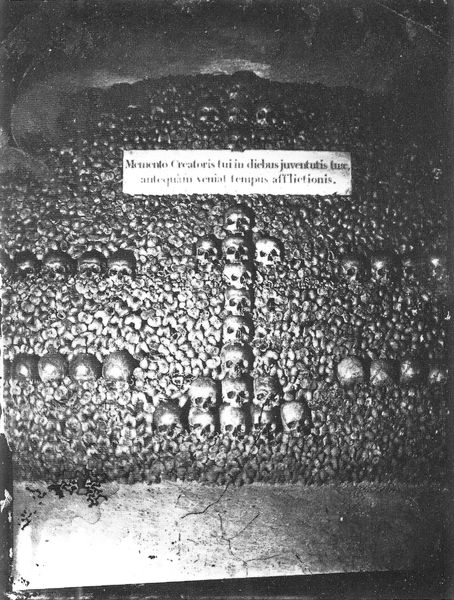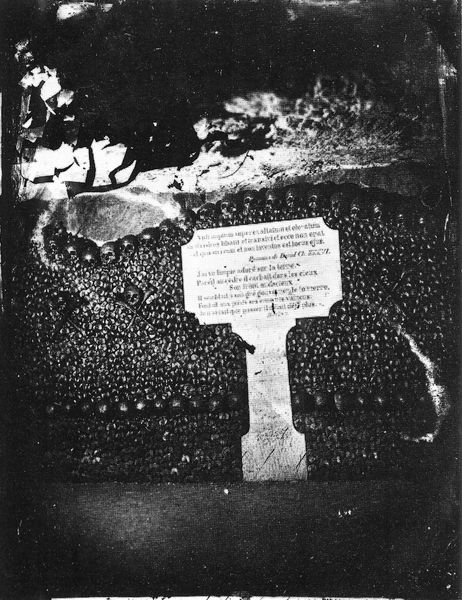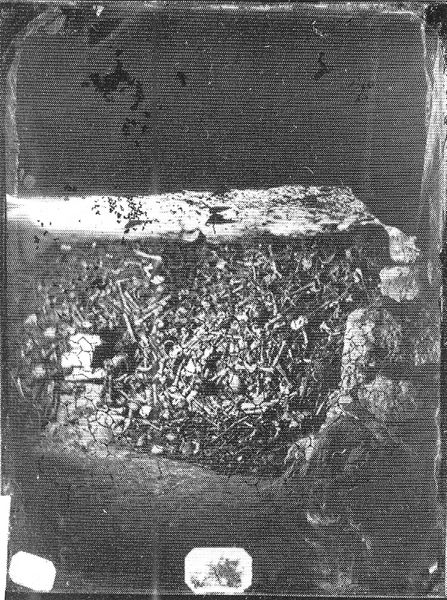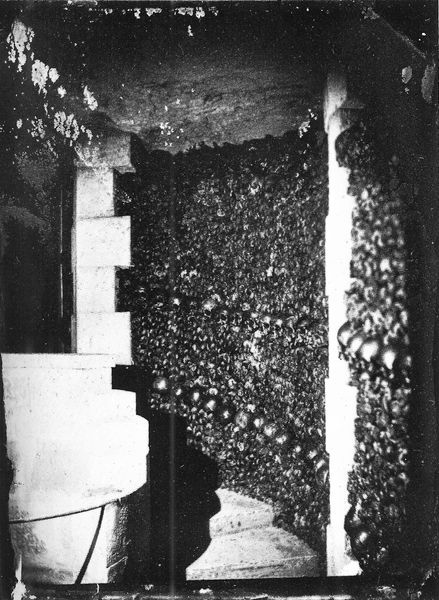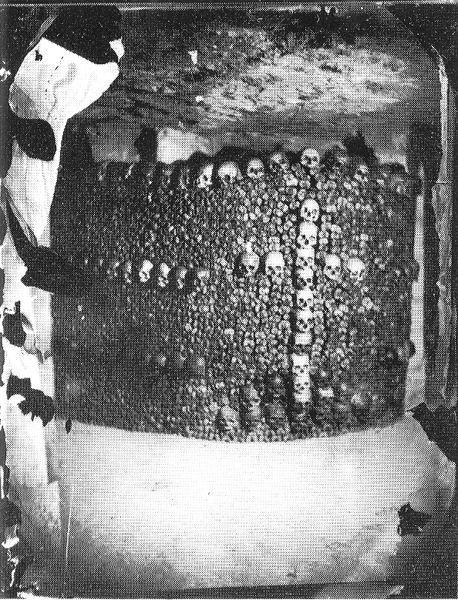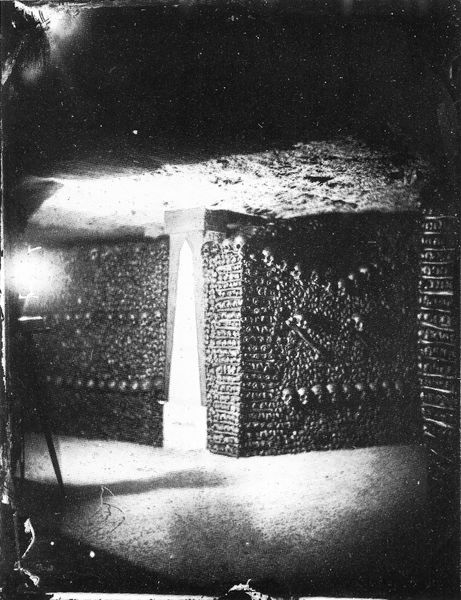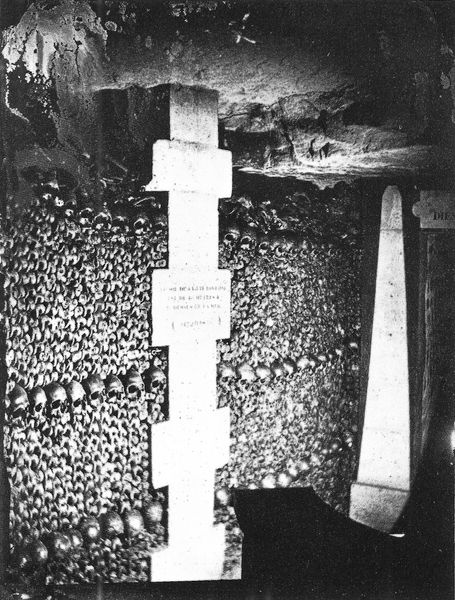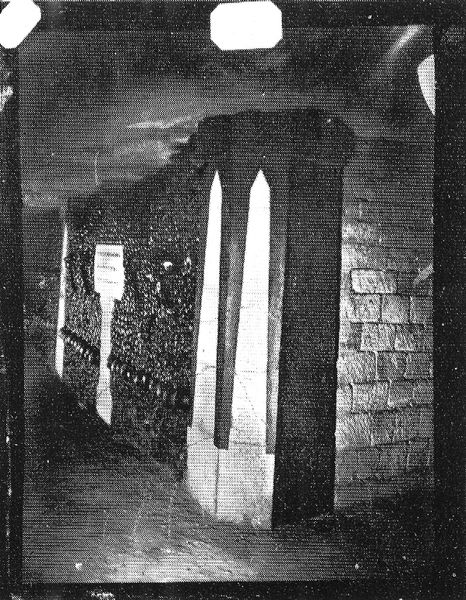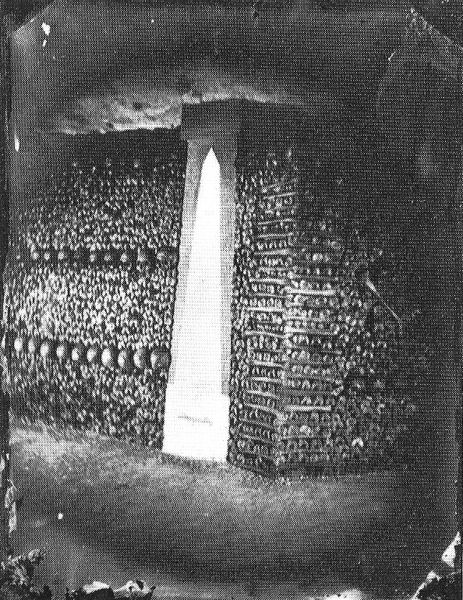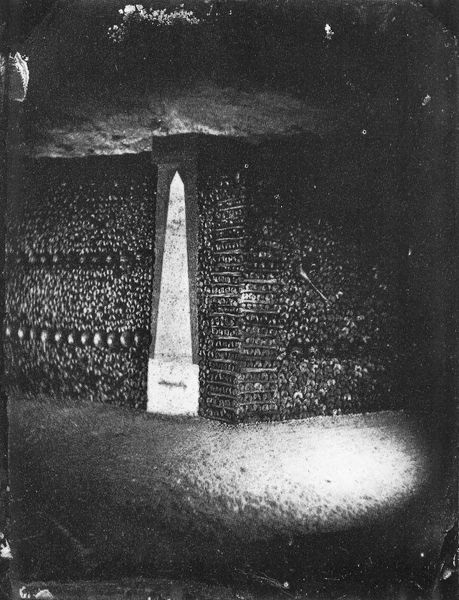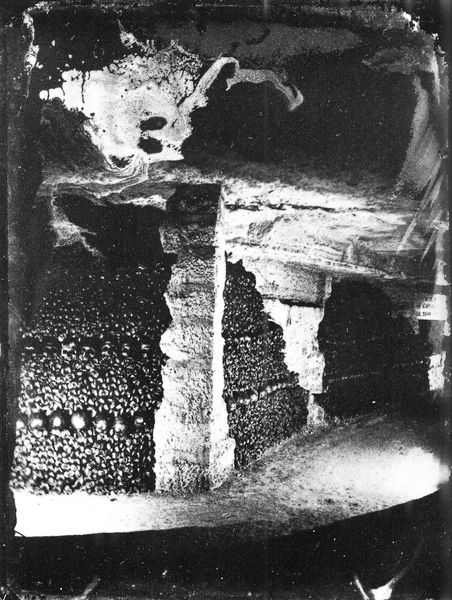
Copyright: Public domain
Editor: Here we have Nadar's "Catacombes De Paris" from 1861, a gelatin-silver print depicting, well, walls of bones. It's stark, a bit macabre, and makes me wonder about the labor involved in creating such a subterranean display. What's your take on it? Curator: What strikes me is how Nadar is engaging with materiality here. It is not just a photo *of* bones, but an exploration of the very process of representation and its connection to the tangible world. Editor: Can you explain what you mean by that? Curator: Certainly. Consider the time – 1861. Photography itself was relatively new. Nadar’s use of the gelatin-silver print wasn't simply about documenting the catacombs; it was about pushing the boundaries of what the medium could convey and, perhaps, critiquing what that era valued as artistic material. The choice of subject matter—human remains—placed within a specific historical context, also alludes to larger societal issues of death, industrialization, and the very commodification of life. The catacombs themselves represent the repurposing of material – human remains stacked for order, if that makes sense. What statement do you think the work tries to make? Editor: I hadn't thought of it that way, seeing the photograph as an extension of industrial practices and re-use of human resources. Curator: Exactly! It's all intertwined - the material reality of the bones, the process of photographic representation, and the social context that shaped both. By exploring this, Nadar seems to provoke us to question the systems of production and meaning that surround us. Editor: This totally reshapes how I see it. I'll be thinking about those processes the next time I examine a work! Thanks for illuminating this. Curator: My pleasure. Keep looking at the how, why and what of art, and I am certain you will start developing your own novel insight too!
Comments
No comments
Be the first to comment and join the conversation on the ultimate creative platform.

